Catalina State Park, Tucson, Arizona
In peace I will lie down and sleep, for You alone, LORD, make me dwell in safety. ~ Psalm 4:8
As panic mounts and more strange decisions are made, (like States closing schools, but then asking the YMCA and other organizations to help care for the kids that aren’t in school . . . I mean, what’s the point? If the point’s to enforce “social distancing”, then why herd them into gymnasiums, etc.? Why not just leave them in school? And if the point’s to protect teachers and staff, then why place other workers “in danger”? Seems to us like no one’s thought this through very well . . .),
we’d like to offer Jesus’ encouraging words to live by:
Who of You by worrying can add a single hour to your life? Since you cannot do this very little thing, why do you worry about the rest? But seek first His Kingdom and His righteousness, and all these things will be added to you as well. Do not be afraid, little flock, for your Father has been pleased to give you the kingdom. ~ Luke 12:25-26, 31-32
And a repeat of Paul’s, in case you missed it the other day:
Rejoice in the Lord always, I will say it again: Rejoice! Let your gentleness be evident to all. The Lord is near. Do not be anxious about anything, but in everything, by prayer and petition, with thanksgiving, present your requests to God. And the peace of God, which transcends all understanding, will guard your hearts and your minds in Christ Jesus. Finally, brothers, whatever is true, whatever is noble, whatever is right, whatever is pure, whatever is lovely, whatever is admirable – if anything is excellent or praiseworthy – think about such things. ~ Philippians 4:4-8
We ventured into Saguaro National Park today. It’s a little bit of a drive, so I called my Mom to touch base with her along the way. We were driving through town, when suddenly, a car decided they wanted to turn right – – but they were in the left lane. Instead of waiting for us to pass them, they decided it would be best to just push us aside. Blaine laid on the horn, I gasped, my Mom waited to hear what was going on. Blaine managed to avoid a collision, but not by much! And the guy ended up gunning past us and turning in front of us anyway. Good grief! Do we have a sign on the Jeep somewhere that says, “Hit Me”?
The Park actually has two parts – an East side and a West side. Since the East side is a very long drive from us, we (as with most people) went to the West side. The East side is mostly just protected land and includes a couple of really long hikes through the middle of the cactus desert, which is something we’re not really interested in.

Scary!!



The Jeep looks good there, doesnt’ it? : )
Let’s cover information about the Park first . . .
- The pronunciation – it’s suh-WUH-row. Why it’s not sa-GUA-row, is anyone’s guess.
- It encompasses 91,000 acres.
- It’s part of two mountain ranges – The Tucson Mountains and the Rincon Mountains
- It didn’t become a National Park until 1994 (under President Clinton), however . . . in 1933, President Hoover created Saguaro National Monument, protecting a small portion of the area, and an additional 71,400 acres were added in 1975.
- The highest recorded temperature was 117⁰ in 1990.
- It’s home to more than 1,160 plant species including everything ranging from cacti, creosote, and other desert plants, to ponderosa pine and Douglas fir in the mountains
- In the United States, the saguaro cactus can only be found in the 100,000 square mile Sonoran Desert and the National Park protects almost all of it.
- There are petroglyphs (the etched carvings remember) within the Park that date back a few thousand years.
And now for some saguaro cactus facts:
- They’re the largest cactus in the US.
- They can grow up to 80-feet tall and weigh up to 8 tons.
- They can live 100-200 years, but no one is certain of the true age of the larger plants.
- A saguaro grows between 1 and 1.5” in the first eight years of its life; branches normally begin to appear at 50–70 years of age. In drier areas, it may take up to 100 years before the branches appear. Saguaros begin to produce flowers at around 35 years of age, and reach adulthood at about 125 years of age.
- Some saguaros have dozens of arms, while others never produce a single one. Why this happens remains one of the desert’s mysteries.
- I could find nothing about why they grow arms in the first place. Must be another desert mystery.
- The cactus bloom between April and June (bummer! We’ll be gone by then! ☹) – and each flower only blooms for less than 24 hours.
- After the blooming comes the fruit, which is harvested every year by the Tohono O’odham Nation, because that was the agreement reached in 1933.
- Each fruit contains up to 2,000 seeds.
- Depending on how much water they amass, their girth can shrink or swell by as much as 20-25%.
- By the time a saguaro is 4’ tall, the roots have been growing for up to 55 years.
- 75-90% of the plant’s mass is made up of water.
- They have an intricate root system, including a ‘taproot’ which grows straight down up to 5’ below the ground surface. The main roots, grow 3-5” underground and stretch out from the taproot in all directions, as far as the main trunk is tall. The roots have special hairs on them that enable them to collect up to 200 gallons of water during a rainfall. The root system is important in order to keep the giants erect (especially during monsoon season with water-saturated land, and also prevent ‘blow down’ during heavy winds.
- The spines shade the plant, shield it from drying winds and discourage damage from animals.
- Its scientific name is Carnegiea gigantic, and is in honor of industrialist Andrew Carnegie because his Institution established the Desert Botanical Laboratory in Tucson in 1903.
- The tallest ever measured was 78’ tall!
- The largest on record within the National Park was nicknamed “The Grand One” and was about 200 years old, 46’ tall and had a dozen arms. Sadly, it was damaged in a wildfire in 2005 and fell over in 2007.
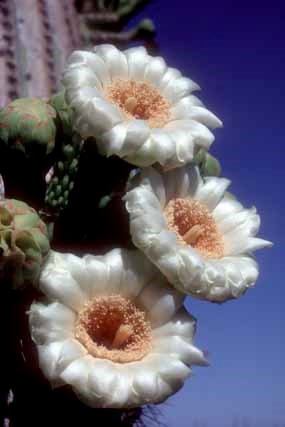
No, we didn’t see them, but this was too pretty to pass up!
I read that they smell like over-ripe melon.
And that’s more than enough information! Let’s get to how we spent our day today!
We had in mind to hike to the highest peak in this side of the Park – 4,687’ Wasson Peak. The trail we expected to take was a 6.6 mile loop trail, but once we entered the Visitor Center and spoke with a wonderful Ranger there we changed our tactic. She suggested instead of the loop to get to the peak via a different route – the Hugh Norris Trail, which was an out-and-back, 10-mile, 2,130’ elevation change hike, but she said it was much more beautiful and more saguaro cactus concentrated than the other way.







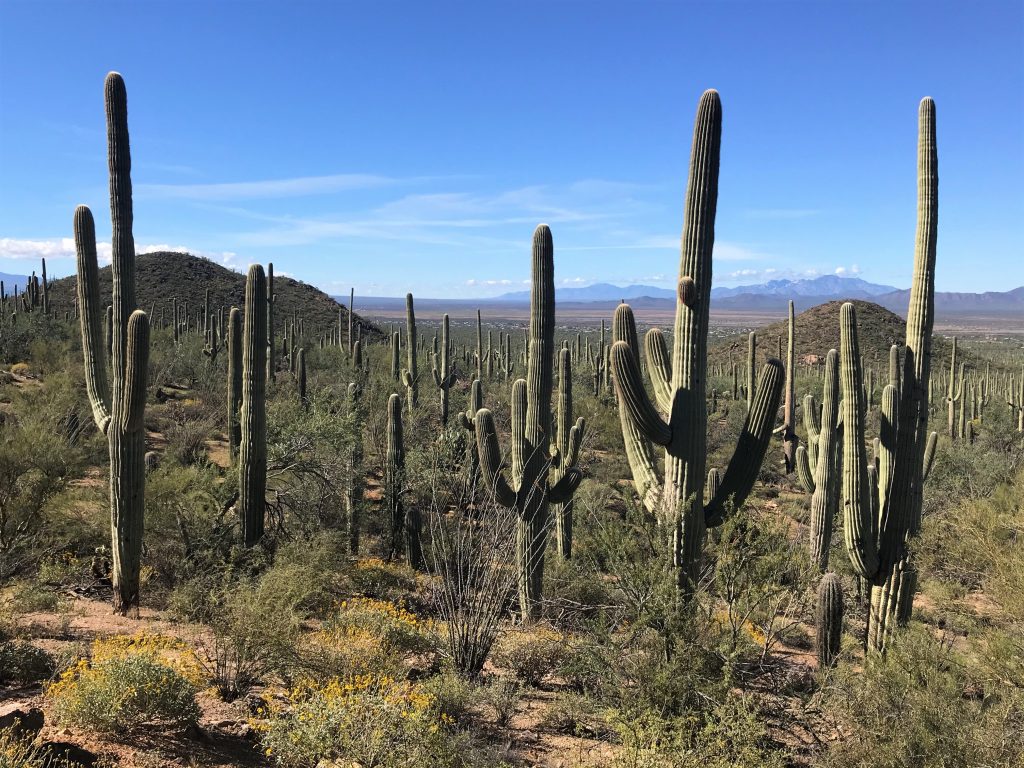



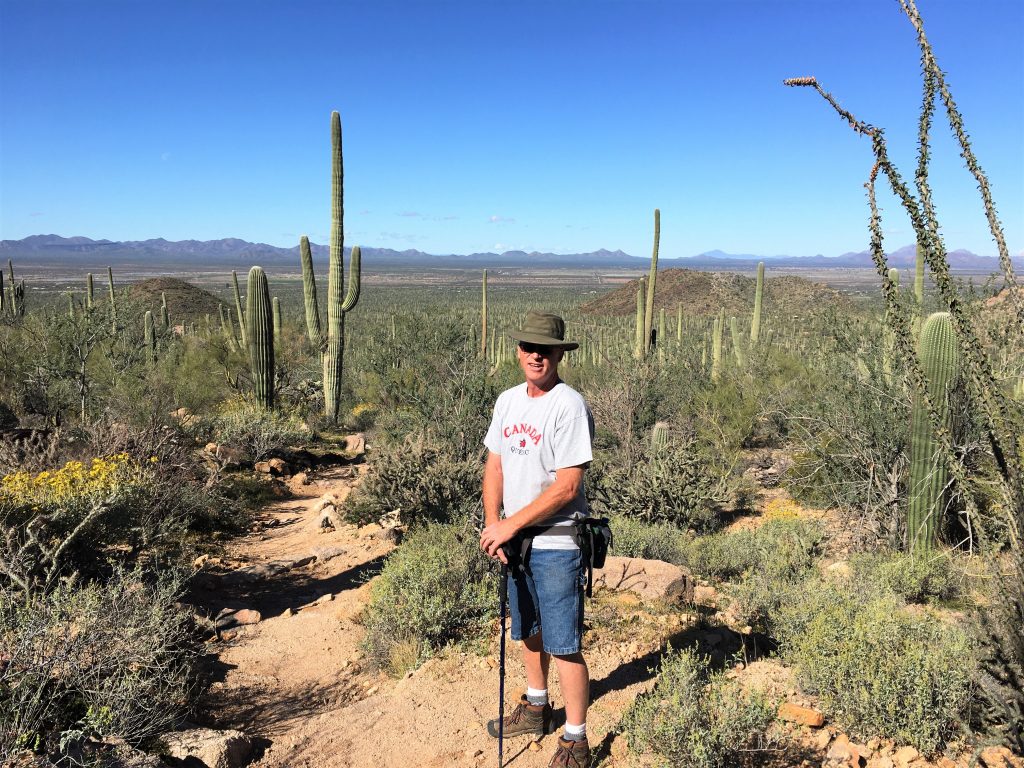







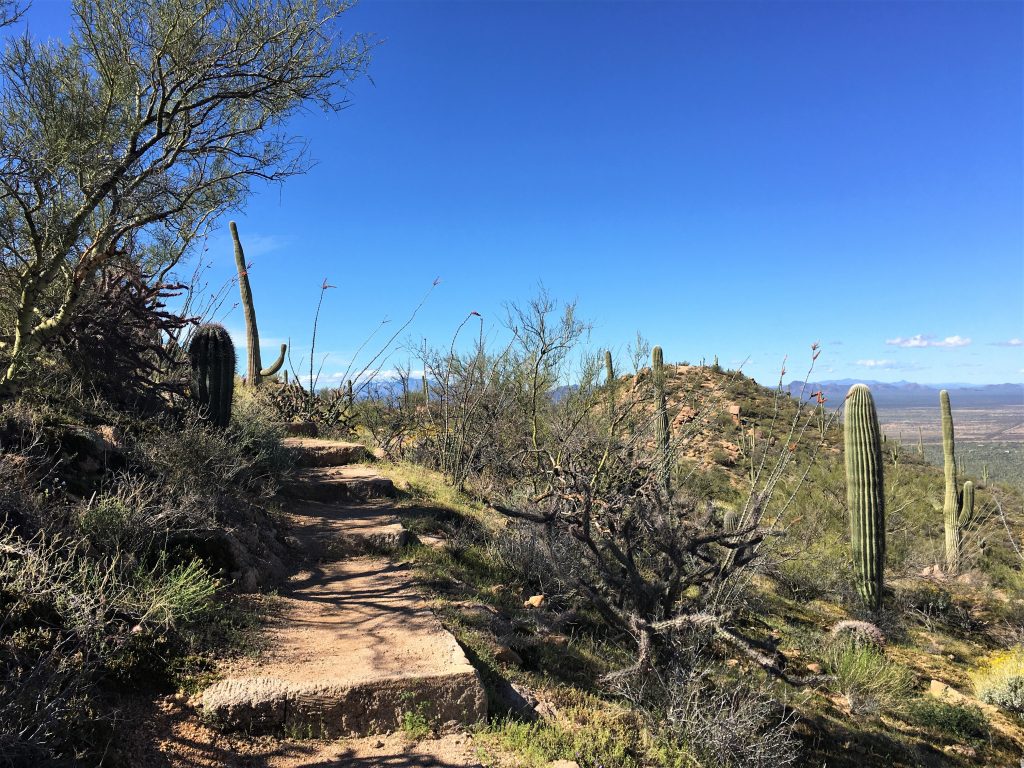




Imagine it in full bloom!







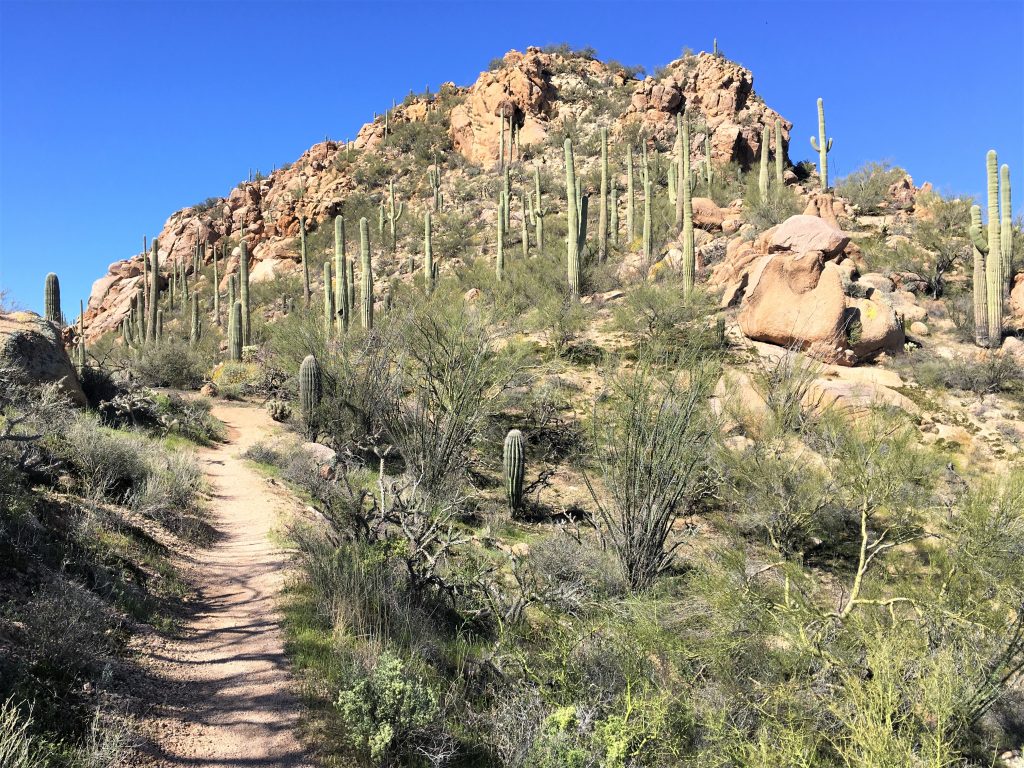










It’s one of those tree cholla’s, and that red thing seems to be coming out of one of the “fruits”.
Interesting!

No.

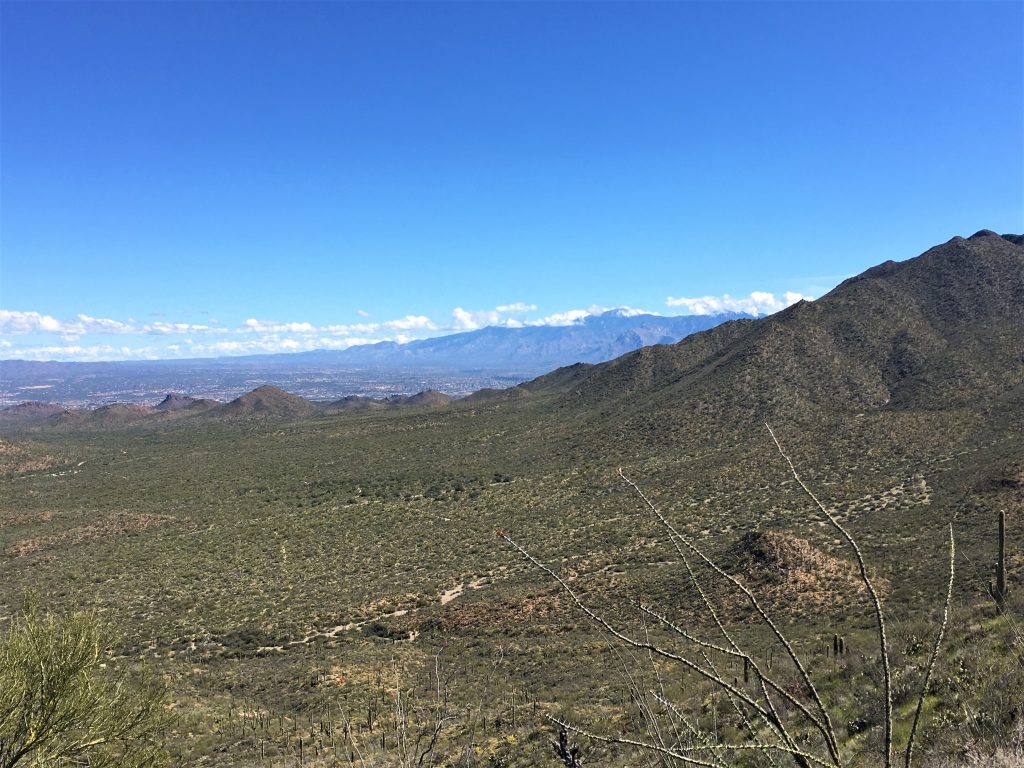


I don’t think so.




There was no information on it.







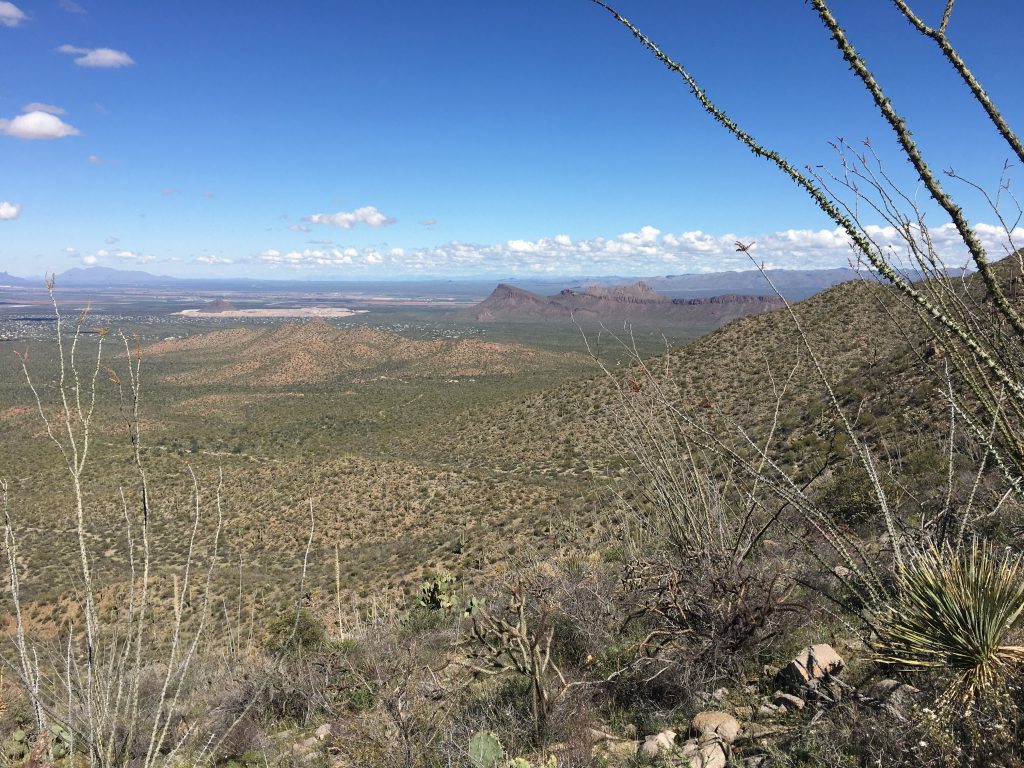







Nah!








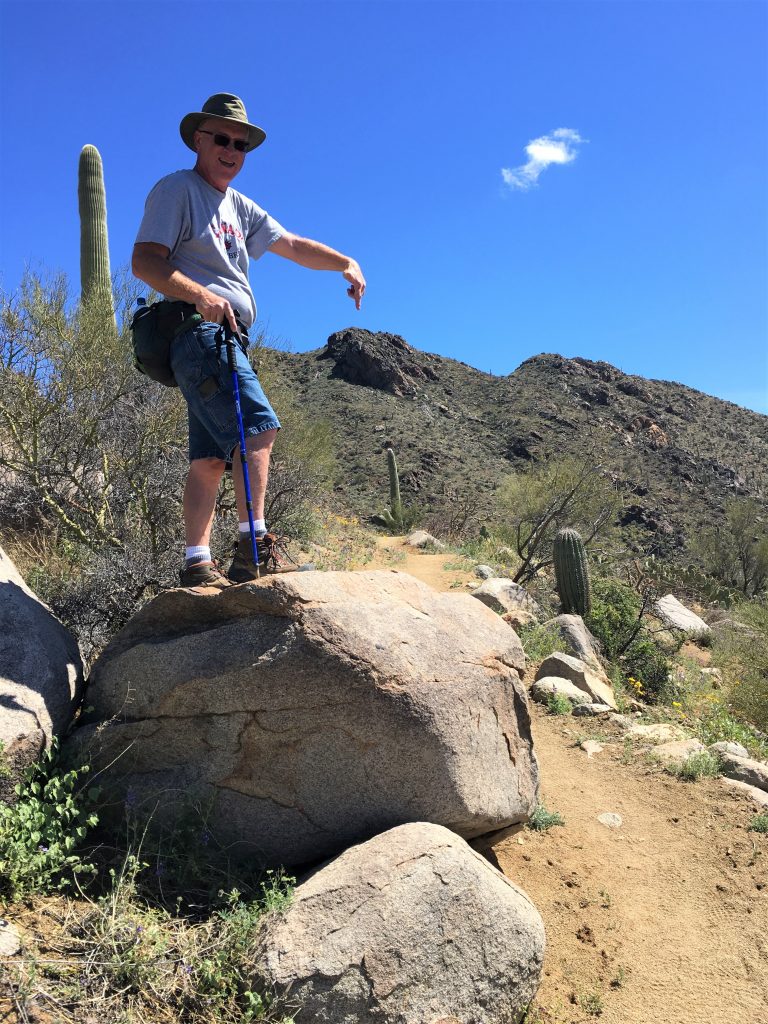
Nope!


He provided a beacon for us!
A way to see where we’re going and how far.
That’s him, under the arrow! : )


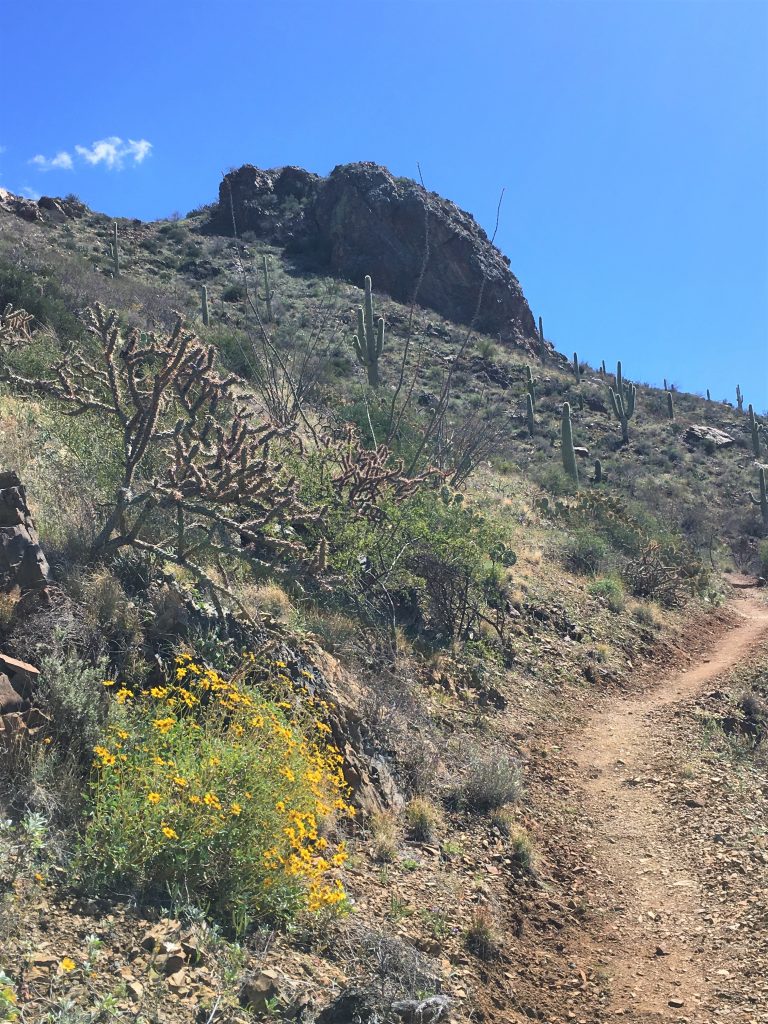






Yes! Believe it or not!











Now you know why I stopped to memorialize it!
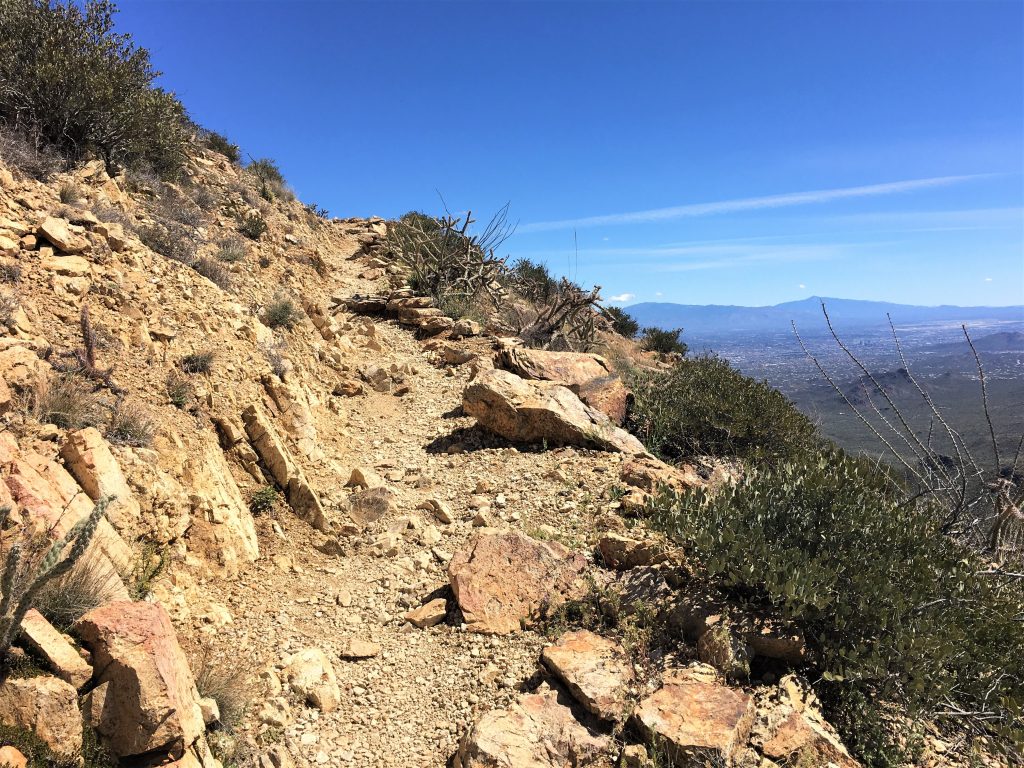

Surprised us!


There were quite a few people up here.








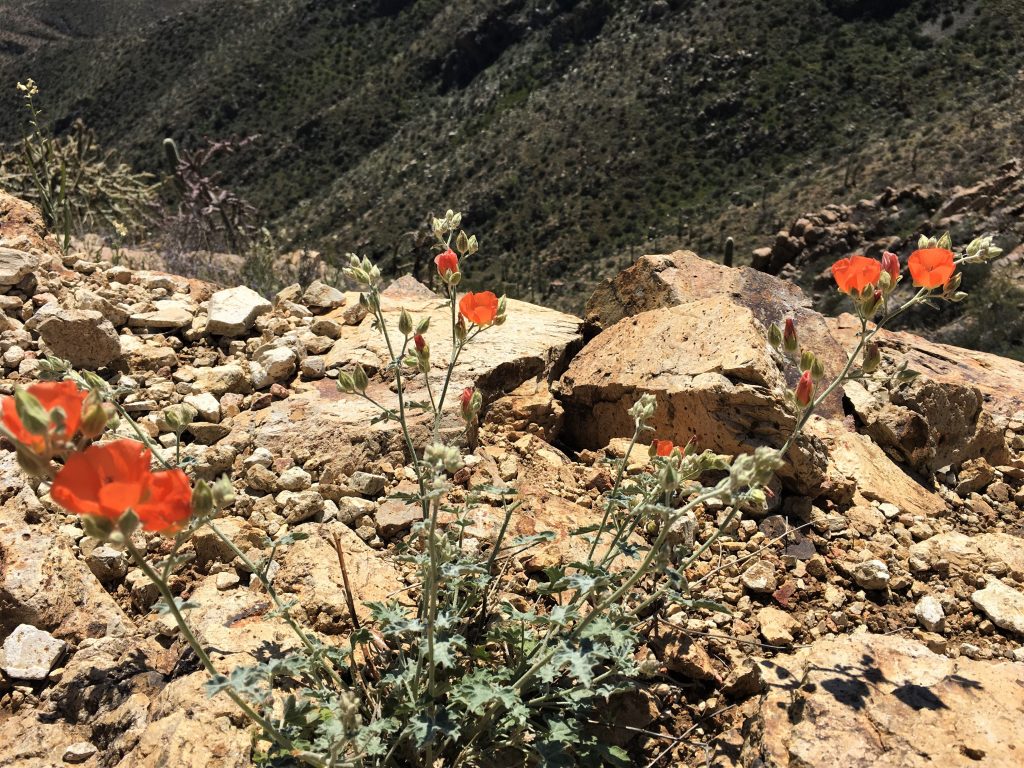



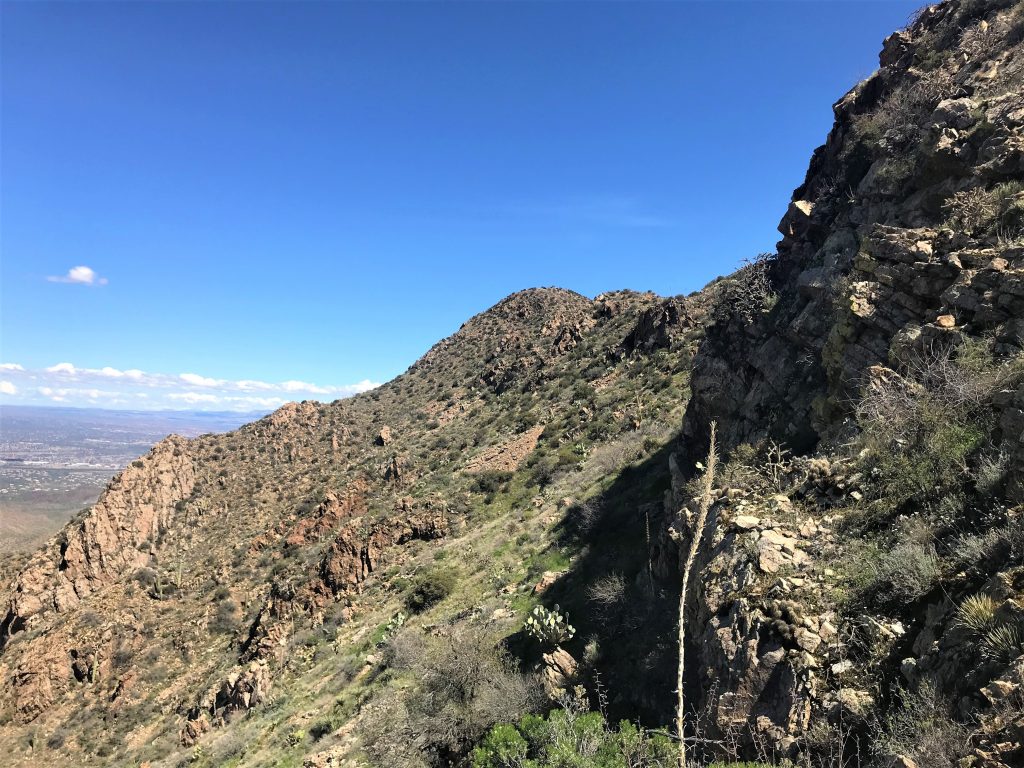
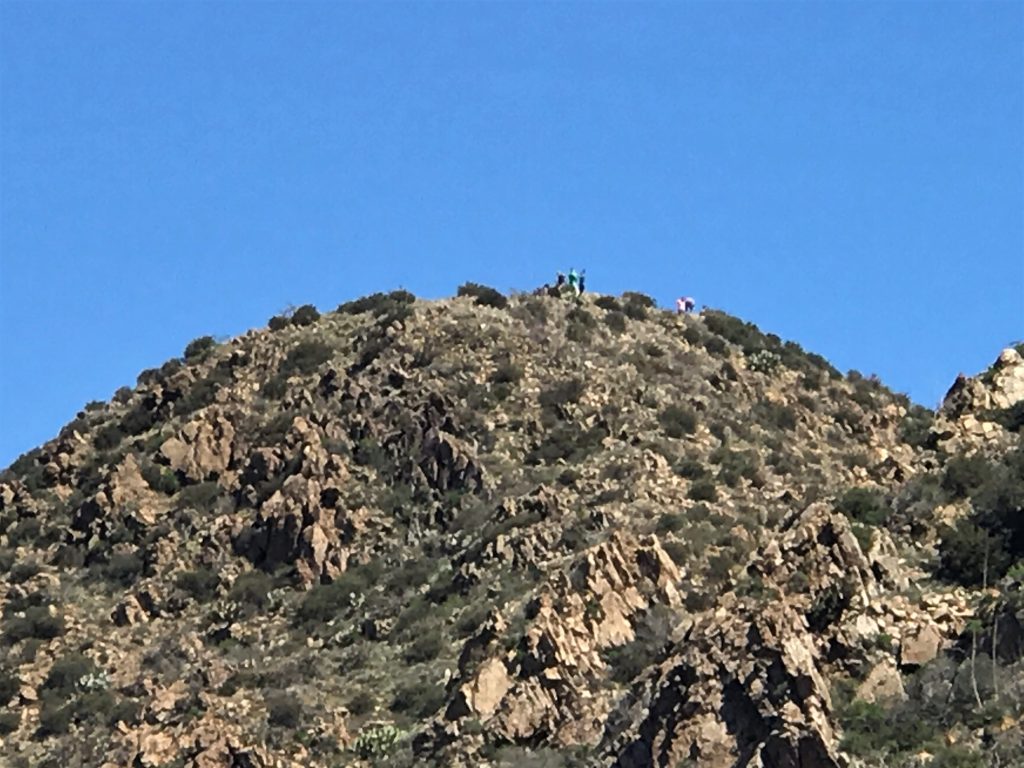








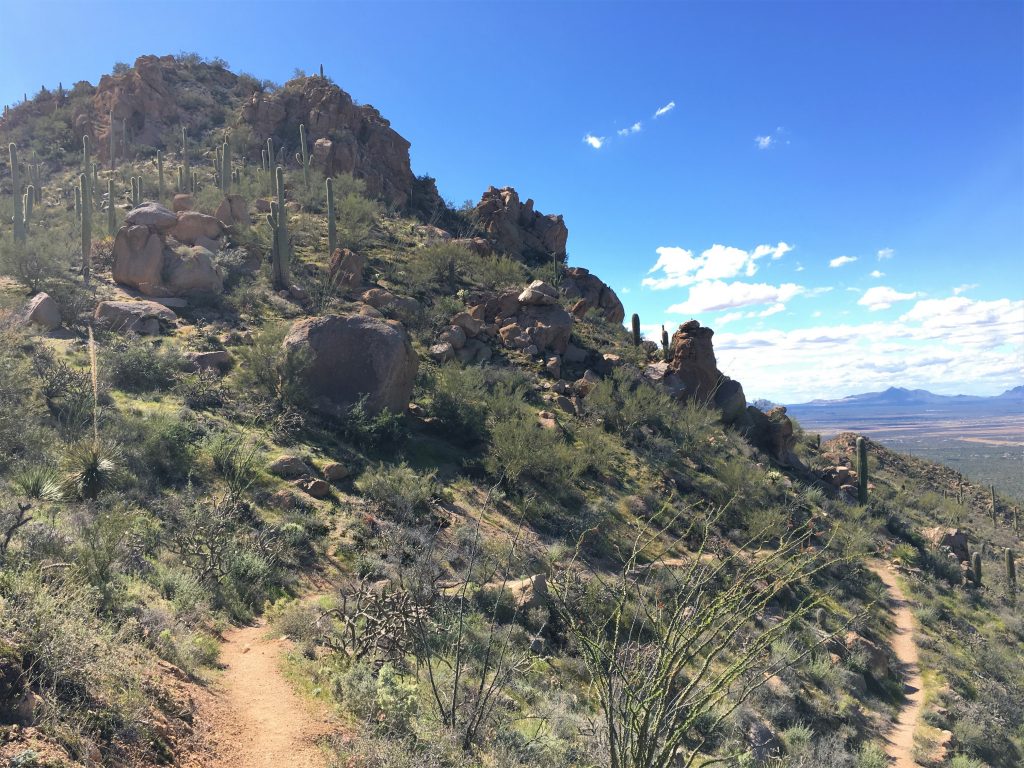


It’s sorta kinda blooming!


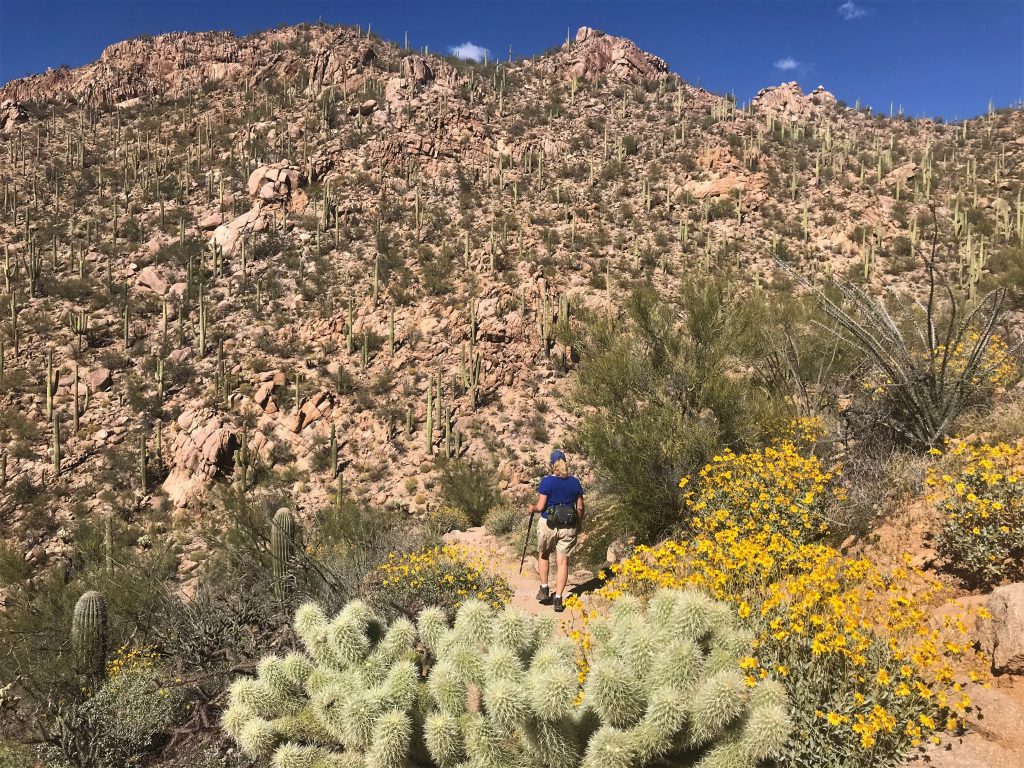




We can’t attest to the loop trail since we didn’t take it, but the way we went was truly beautiful!


